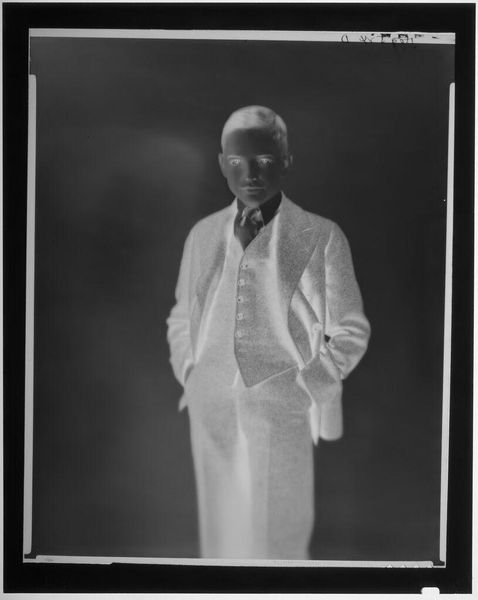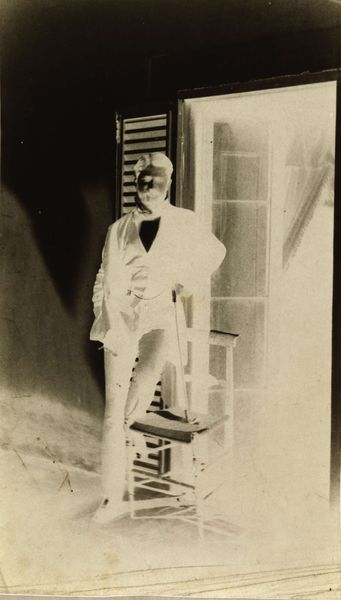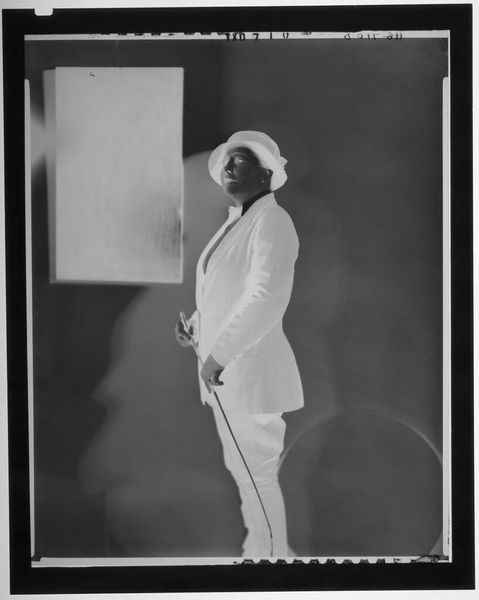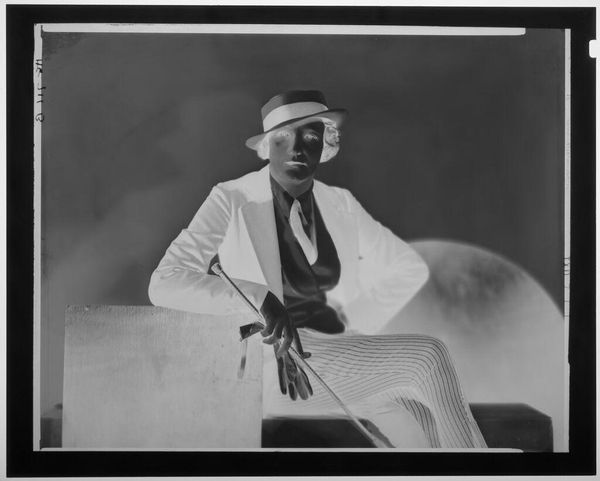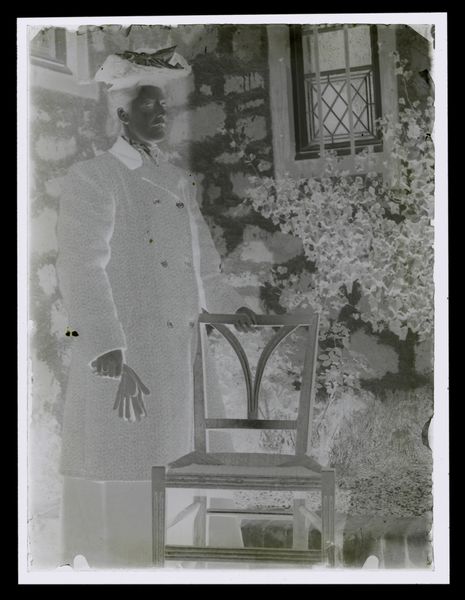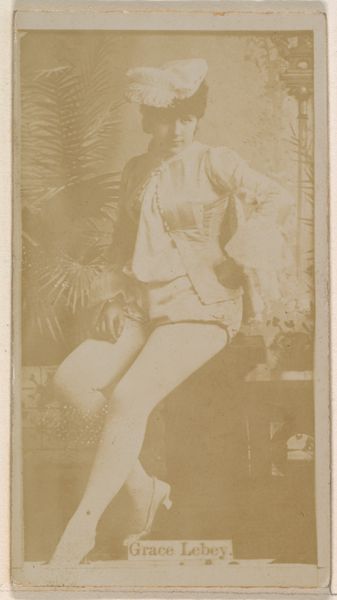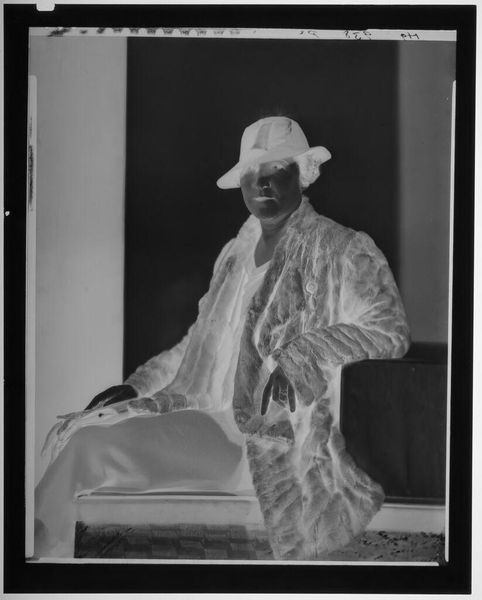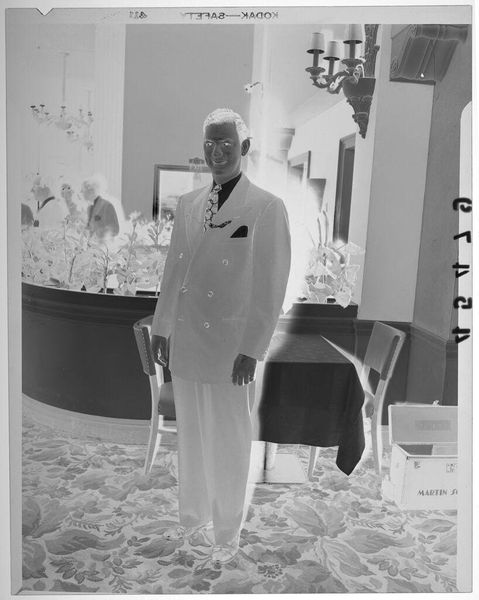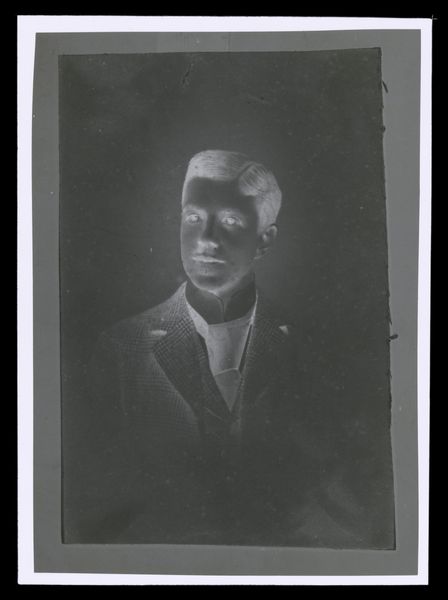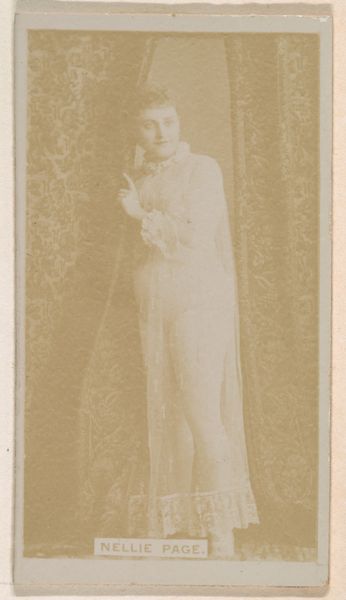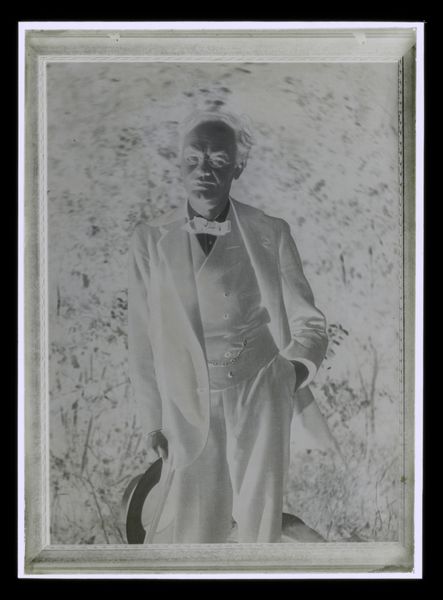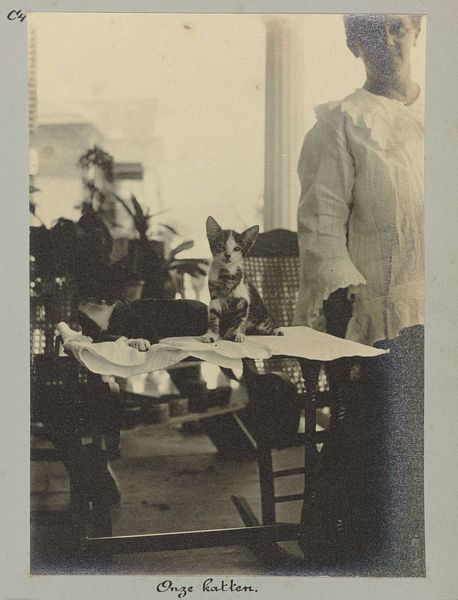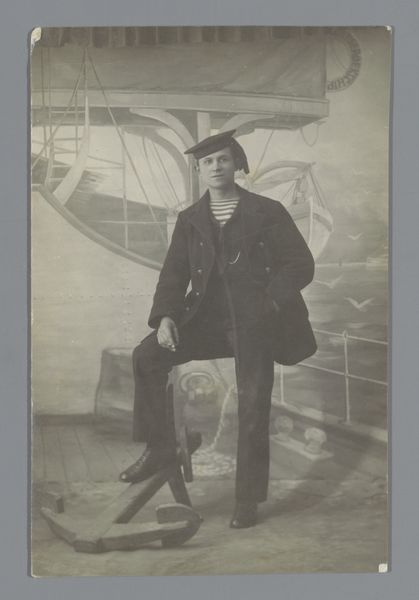
photography
#
portrait
#
photography
#
portrait art
#
realism
#
monochrome
Dimensions: height 130 mm, width 180 mm
Copyright: Rijks Museum: Open Domain
Curator: This arresting portrait is a photograph of Alphons Diepenbrock by W.G. Hondius van den Broek, created sometime between 1895 and 1925. It offers a compelling glimpse into a bygone era, rendered in stark monochrome. Editor: My first impression? Ethereal. Like a ghost captured in time. The high contrast gives him this almost luminous quality, and the overall effect is one of delicate, haunting presence. It reminds me a bit of some very early spirit photography... Do you think there might be something similar in this? Curator: The effect might be due to the photographic process itself. Negative images like these have their own stark beauty. Look how sharply the features are defined, while still maintaining softness. But spirit photography as a link… interesting. Considering that the portrait was made in the period when beliefs around spiritism and paranormal phenomena were very strong and vivid. The inverted contrast does give it an uncanny air. I wonder how contemporaries might have viewed this inversion. Editor: And look at the way he is posed: his hand is slightly tucked into his vest and the other dangling loosely as though time has suddenly caught him in the act of moving, not posing. Does the hand in vest suggest a particular persona, almost like a performance or an idealization of Diepenbrock. Curator: Yes, that gesture was indeed a fairly conventional pose in 19th-century portraiture—signifying composure and status but within a context where status was not always openly stated, but signaled and recognized. Yet, within the rather rigid rules that define that period for photography, there's still a sense of a personality trying to be revealed. Editor: Absolutely. The image hints at his inner self, this musician. Do you get that, or am I totally projecting now? Maybe I am seeing what I know about his body of work... Curator: Not at all. Portraits often serve as mirrors reflecting not only the subject, but also the viewer. The slight unease created by the reversed tonality coupled with the standard codes and postures evokes the image of what a modern composer, surrounded with classical codes, looks like to the world: familiar but strange at the same time. Editor: A compelling figure indeed. Curator: Definitely one to think about a while longer. Thanks for sharing your vision on it.
Comments
No comments
Be the first to comment and join the conversation on the ultimate creative platform.
